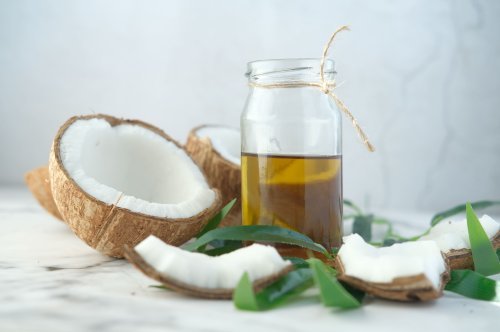Top 5 Largest Coconut Producing States In India

India is one of the largest producers of coconuts in the world, and thus, this crop is cultivated quite massively across several states, hence forming a substantial part of the economy of the country and serving for livelihood to so many farmers. This diet subsisting food has so many culinary uses with its industrial purposes. Now, let us go through the names of the top five most coconut-yielding states in India this season.
Karnataka
However, Karnataka stands at par with the skill of the country's highest coconut-producing states. Apart from the climatic conditions and extensive cultivation emerging practices, the production cost for a country like India is less. The districts of Dakshina Kannada, Udupi, and Uttara Kannada have an important role as the coconut cluster of Karnataka. Apart from getting highly innovative and modern techniques of farming, the state also adopts commitments to agricultural innovation to maximize their yield of coconut.
Tamil Nadu
Palm cultivation is very much admired among the longtime people of Tamil Nadu. Cozhna trees bloom in the Coastal zones of Tamil Nadu, and Districts like Kanyakumari, Tiruchirappalli, and Thanjavur offer excellent Climatic conditions for their growth. The agricultural policies of Tamil Nadu, along with the supporting systems from the state, have been a good foundation for the coconut industry that makes consistency in production common. Moreover, efforts in sustainable agricultural practices can contribute to state agricultural stability.
Kerala
Association with coconuts, in general, and Kerala, in particular, reflects a great deal in the cultural and economic aspects of its life. The state is graced with very many lovely landscapes that have coconut trees growing everywhere, hence pinpointing it as a coconut hub. Both coconut productive zones in Kerala, characterized by rich soil and usually befalling by heavy rains, are enviable eco-zones that are very favorable for planting coconut. The rest of the major contributors to coconut production in this state are Kozhikode, Malappuram, and Thrissur. It is due to the organic farming and age-long cultivation techniques advocated by the state that this area was able to earn good standing as the number one coconut-producing place.
Andhra Pradesh
Andhra Pradesh looks to be playing the role of a leader in the Indian coconut cluster while it becomes not just a production center but also turning to be the main distribution point for the whole country. Coconut farming is most favorable along the coastal side that covers the districts of Krishna, West Godavari, and East Godavari belong to. In addition, forward-looking agricultural policies and investments made in infrastructure are the reasons for prosperity of this area. Furthermore, the irrigation schemes as well as research done on raising the yields of plantations in the state have been some of the strategies which can make coconut farming productive for the country.
West Bengal
Coconut plantations have huge prospects in the coastal and plain land areas of the state of West Bengal. We see cultivation activities at work in places like South 24 Parganas, North 24 Parganas, and East Medinipur on large acres. Although West Bengal coconut farmers face challenges like soil salinity and strong cyclone weather, they show ways to be resilient and adjust in the process to keep a high level of coconut yield outcomes. The state government itself is also supporting the sector through subsidy and technical assistance programs, which add up to the relatively good development in coconut farming in this province.
Conclusion:
The coconut industry in India rests mostly on complex linkages, including united and skillful farmers, and helps grow the sector by providing favorable agro-climatic conditions and supportive government policies. It is this ranking of the top 5 coconut-producing states—Karnataka, Tamil Nadu, Kerala, Andhra Pradesh, and West Bengal—that harmoniously portrays the agro-economic genius and clever harnessing of natural resources of the nation. While traits of innovation and sustainability characteristic of the new states reflect considerable growth potential for as long as economies and livelihoods centred on coconut remain on track.
FAQs:
Q1: What variables are responsible for this unique characteristic of the coconut plantation in the above-mentioned states?
ANS: In these States, the dominant coastal regions, nutrient-rich soil, climate, and favorable agricultural policies are some vital factors that give palm oil production a boost.
Q2: How do these regions ensure that the number of mature coconut trees per acre of land is high enough to produce a good output?
ANS: In maintaining high-quality coconut products, sophisticated farming methods, organic ways of farming, and quality standards are critical aspects of a quality-keeping process.
Q3: Apart from challenges, what are the obstacles states there meet in coconut production?
ANS: Depending on the farmers' resiliency and resourcefulness, there will be methods of surmounting problematic grapes at times associated with reverse climate, land salinity, insect infestation, and market fluctuation.
Related Topics:








